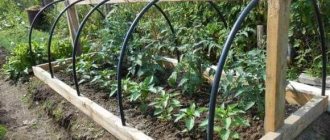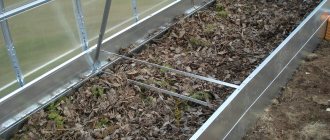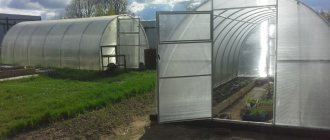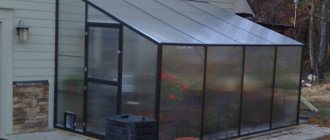All gardeners know that there are never too many berry plants on a plot. This is especially true for strawberries, which are actively eaten fresh, in compotes, and in jam, and the demand for them on the market is consistently high. Vertical beds for strawberries are built primarily to save space in open ground and in greenhouse conditions, where the favorite berry is harvested all year round.
Remontant varieties are actively cultivated in greenhouses using nutritious soil substrates or hydroponics in multi-tiered structures
Features of growing strawberries in vertical beds
Strawberries in vertical beds at the dacha are a set of containers placed vertically at some distance from each other. Berries in such containers are grown as indoor flowers.
Important! It cannot be said that such a solution is much more convenient or contributes to a higher yield. The vertical bed is designed specifically to save space - it does not serve any other purpose.
The peculiarity of this solution is the small amount of land used. At the same time, the area of contact between plants and air is much larger. Accordingly, a small volume of soil loses moisture faster and dries out. In addition, unlike indoor flowers, fruiting strawberries require much more nutrients. Maintenance of such a structure must be intensive.
Here it is recommended to grow day-neutral, remontant, and hanging strawberries. The latter bears fruit on unrooted tendrils. This way you can get a good harvest on a modest area.
Advantages and disadvantages of vertical beds for strawberries
The small volume of land determines all the features of growing strawberries in vertical beds. The advantages of the solution are:
- Vertical placement saves space. This design only occupies the base area. They grow berries in a greenhouse, on the lawn in front of the dacha, and even on the balcony.
- The soil for the garden bed is cleaned and prepared, which allows you to get rid of pests, pathogenic microflora and prevent the appearance of weeds. The structure does not come into contact with the ground on the site, so in such cases the strawberries get sick much less often.
- The vertical position makes it easier to care for plants: there is no need to bend over or kneel to harvest.
- A vertical bed looks very decorative and neat, so it can also serve as an original decoration for a summer cottage.
The design has many disadvantages:
- as already mentioned, such a small volume of soil dries out quickly, strawberries need to be watered more often or arranged with drip irrigation;
- The plants should be fed more often, since the soil in the containers is quickly depleted, and the berries should not be overfed either;
- for the winter, the berry garden should either be moved to a barn or very carefully insulated; a small amount of soil quickly freezes, which leads to the death of the strawberries;
- Filling a vertical bed with soil takes a lot of time and effort.
Important! Only viable seedlings of good quality are planted this way, since the growing conditions for strawberries here are not the best. Otherwise, the berries will have to be constantly replanted.
Rules for creating a multi-level flower bed
It is a mistake to think that a multi-level building will take up too much usable space on the site. It all depends on the owner, who can allocate both a compact area and a place of considerable size. Since a large flower bed can look bulky, it is recommended to build several small frames.
Even the same flower bed can be transformed every year if you change varieties of flowers that differ in color, size and shape. Designers advise not to use flowers of different sizes on the same tier. Flowering plants should be arranged according to the following scheme:
- on the lower tier there are flowers with large inflorescences;
- on the upper tiers with smaller flowers;
- all tiers with flowers of the same size.
Since the structure of the flowerbed has the peculiarity of water flow from the upper tiers to the lower, when planting plants it is important to take into account their relationship to moisture. Drought-resistant species should be placed on top, and moisture-loving species below.
In order for the flowerbed to look pleasing throughout the summer, it is necessary to select flowering plants according to the flowering period.
Types of hanging beds for strawberries
The most popular option is hanging models. It's easiest to arrange them. The principle is this: the required number of shelves are attached to a vertical base, on which containers for strawberries are placed. The design can be suspended if pots or boxes with plants are hung like flowerpots from the wall.
The verticality of the strawberry bed in this case is questionable. However, the shelves are placed at any height convenient for the summer resident, so it is easier to care for them. There are many options for such a device.
Vertical beds for strawberries made from plastic bottles
The most popular available material today is plastic containers. It is used in the construction of strawberry beds. For this purpose, they take not bottles, but bottles with a volume of at least 5 liters. A smaller container is not suitable, since then the volume of land will be insufficient for cultivation.
The bottle is cut approximately in half. The upper part is turned over and inserted downwards into the lower neck. It serves as a container for soil. The lower part acts as a tray. The neck is loosely screwed on with a lid so that excess moisture can seep into the pan when watering.
You need to monitor the humidity. There is quite a bit of soil in such a pot. To prevent moisture from coming out too quickly, but to avoid waterlogging, drainage is placed in the upper parts: sawdust, peat, or even a piece of padding polyester, since this material is capable of absorbing moisture and then releasing it.
Do-it-yourself hanging beds for strawberries are set up on balconies or in dachas, where it is possible to attach the container to the wall. Since plastic is a very light material, the load on the base is determined only by the volume of soil in the container.
Vertical beds from pallets for strawberries
An original and effective option for a summer house is a structure made from a pallet. The design has standard dimensions, which is very convenient. Strawberries are planted here in an unusual way.
To turn a pallet into a vertical bed, the product is cleaned and sealed on both sides. The bottom of the pallet is lined with burlap on the inside. The outer side, where there are no slats, is covered with spunbond or a similar material: it is important that it is elastic, but quite rigid, because it holds the volume of the earth. Then the prepared soil is poured into the resulting structure.
Cuts are made on the burlap between the slats, into which the berries are planted. Plants in such rows are placed horizontally to the ground. Remove the topmost crossbar from the pallet - the side one, and plant the berries in the upper part of the bed.
Important! It is better to rest the pallet on a wall or fence, since the stability of such a structure is low.
Vertical strawberry beds made from tires
A car tire often serves as a kind of fencing for a mini-flower bed. However, they can be used to build a real vertical bed. There are 2 options:
- Tires of different sizes - from KAMAZ wheels to Zaporozhets - form a kind of pyramid. Each tire is covered with earth as it is installed. The structure is securely held by steel cord. Strawberries are planted in open areas of each “shelf” and in the top cover.
- Tires of the same size are assembled into a cylindrical structure and also filled with earth. In this case, slits are made in the tires and plants are planted in them.
Important! An irrigation pipe with slots is installed inside the pyramidal and cylindrical structure, since it is impossible to provide watering in any other way.
Tires, when heated in the sun, begin to emit a not very pleasant smell. To avoid this, the vertical bed is painted white, which reduces the heating of the material.
Vertical beds for strawberries made of PVC pipes
Pipes made of polyvinyl chloride and polyethylene are often used for purposes other than draining water or other liquids. The shape of the product, lightness, strength, elasticity of the material allows it to be used in the most unusual way.
Both vertical and horizontal beds are assembled from PVC pipes. You will need 2 water conduits: with a diameter of 200 mm and a thinner one with a diameter of 20 mm. In thicker pipes, holes with a diameter of 15 cm are made at a distance of 20 cm from each other. Strawberries are planted in them.
The height of the structure is small, but its volume is very small. On a 2 m long plot you can install at least 8 vertical beds. This option is most often used in greenhouses, since it is easier to regulate the microclimate here.
Vertical beds for strawberries made from wooden boxes
Vertical strawberry beds for the home can be built from any container, including wood. A variety of models are used.
The simplest and most affordable option is wooden boxes of different lengths and widths. Several of these containers of different sizes form a kind of pyramid. An irrigation pipe with holes is installed through all the boxes in the center. Then the structure is filled with earth, and strawberries are planted in open areas.
Important! Boxes can be placed not only in the form of a pyramid, but also in a ladder, in a checkerboard pattern - in any suitable way.
Small wooden boxes are installed on a base board or on a frame, even on a durable trellis. In this model, it is especially important to provide hydration. To do this, drainage is placed at the bottom of the boxes and drip irrigation is organized.
Another option: using old furniture like a chest of drawers. Its drawers, extended to different sizes, can easily serve as containers for strawberries.
Vertical strawberry beds made from iron barrels
A metal barrel with a capacity of at least 50 liters is also a good option for creating a vertical bed. This is very simple to do: the barrel is cleaned of rust and dirt, holes are cut in its wall at a distance of 20 cm from each other. The holes should be quite large - 8-10 cm in diameter and staggered.
An irrigation pipe is installed inside the barrel, drainage is laid on the bottom - pebbles, crushed stone, sand. The vertical bed is filled with soil gradually as the strawberries are planted in the slots in the walls.
Important! You can use not only metal, but also polyethylene barrels. To some extent, they are more convenient, since they are lighter and do not require rust protection.
Other types of vertical beds for strawberries
To plant strawberries in hanging beds, you can use other devices. The choice depends on many factors:
- An excellent option for a balcony is a bed of ordinary pots. Containers of different sizes can be stacked inside each other to form a pyramid. You can fix such containers on a trellis or simply on one of the walls of the loggia. The option is convenient and very decorative.
- For a dacha, an interesting solution would be a pyramid made of boards. The cross slats on the sides of the pyramid are installed at an angle so that they serve as a limiter for each horizontal row of strawberries. The pyramid is filled with earth, and a berry is planted on each bed.
- A vertical bed for strawberries is made of iron mesh. A fragment of it is rolled up, and the walls are braided with straw or covered with film. The pipe is filled with compost, then some of the cells are emptied, and strawberries are planted in the resulting slots.
There are other options that are less popular due to lower availability.
Tiers with pots
If we consider a greenhouse on a summer cottage, small both in size and in the number of plants, you can take any pots about 20 cm in diameter or larger. On an industrial scale, identical pots are purchased, suitable for a drip irrigation system.
The method is incredibly simple: one plant in each pot. And then what kind of imagination does anyone have? You can put it on racks, you can hang it, you can attach it around the perimeter to the structural elements of the greenhouse.
How to make a vertical bed for strawberries with your own hands
The construction technology is very simple. It comes down to the phased installation of elements and filling them with earth. It takes a little more time to obtain such a structure from pipes.
- First, determine the dimensions of the vertical bed for strawberries. You should not use a pipe longer than 1.5 m, since at high heights it is inconvenient to care for plants.
- A pipe with a large diameter, at least 200 mm, serves as the base. A thin pipe - 20 mm, is an irrigation pipe. Small holes are made in it for drip water supply. Large holes are drilled in a large pipe - 8-10 cm at a distance of 20 cm from each other. Strawberries will be planted here later. The holes should be made in a checkerboard pattern, since the PVC pipe is not very rigid. The holes at the very bottom of the pipe are not used for planting: they are needed to allow excess water to escape. This prevents root rot and the appearance of fungus.
- A thin pipe is installed in a thick one. The space between them is filled with soil or compost as strawberry seedlings are planted in the holes. The soil is thoroughly moistened. Then the finished bed is dug into the ground. The pipe must rest on a frame or supports, since such a structure itself is unstable.
- It is recommended to close the upper end of the pipe with a wooden plug to reduce moisture evaporation.
Important! PVC pipes are quite resistant to rain and sun. Therefore, vertical beds can be safely placed in sunny areas, as required for strawberries.
Smart
It has been noticed that plants fertilized with food debris or organic humus develop faster and produce a rich crop. This trick is very popular among summer residents. The beds with such fertilizers began to be called “smart”. Their essence is that when constructing a bed, the soil is poured in layers, alternating with organic matter.
Smart bed technology:
- First, a box is built from boards.
- Before filling the soil, lay a net. This will protect the roots from rodent pests.
- Drainage (crushed stone, brick, stones) is laid on top of the mesh.
- Lay an irrigation hose and bring the end out.
- Next comes the main part - layers of soil are poured inside the box. First comes large organic waste (pieces of branches, leaves), then fertilizer in the form of compost, and finally soil from the garden.
Technology for planting strawberries in vertical beds
The methods for planting strawberries in vertical beds are not much different from the conventional method. Features of planting and growing are determined only by the volume of soil.
- The beds should be placed so that the strawberries are illuminated by the sun most of the time. This is especially important when the bed is stationary, for example, suspended on the wall of a building. A pyramid of tires or boxes can be placed even in the middle of an asphalt area.
- It is important to choose the right container size: at least 3–5 liters of soil. The roots of the plant reach 20–25 cm in length, and if they have nowhere to grow, the strawberries will not be able to take root and bear fruit.
- You need to choose the soil very carefully. The soil should be loose, fertile, with a pH of 6.0–6.5. You can use ordinary garden soil, but if you enrich it with wood ash and peat. If the soil is not loose or clayey, river sand, sawdust, and vermiculite are also added to the mixture. If the soil is poor, superphosphate and potassium sulfate are added to the mixture - a pinch per bucket of soil.
- Drainage is required. A layer of expanded clay, crushed stone, and pebbles 10 cm thick is poured into the bottom of the container or into the lower part of the bed.
- When planting seedlings, make sure that a distance of 20 cm is maintained between the bushes.
- It is better to plant strawberries in a vertical bed in the spring, especially in the southern and northern regions. In the south, planting in October for the winter is allowed, but only if a warm winter and no frost are guaranteed. In the middle zone, it is preferable to plant strawberries in August and complete all work before the beginning of autumn.
- For planting, rooted tendrils, seedlings, and young bushes no older than 2 years are used. In the first case, the vertical bed will remain idle for the first year, since the mustaches do not produce such a quick harvest. Seedlings ensure the appearance of ripe berries sooner, but growing them is a complex and lengthy process. It is best to use young bushes from a horizontal bed. They are planted together with a lump of earth and already in the fall such strawberries produce their first harvest.
- Water the strawberries in the vertical bed several times a day with a small volume of water. Drip irrigation is preferable.
- If flowers appear on the berries too quickly, the buds are torn off. Flowers are left only after the bush has taken root and produces several new leaves. From now on you can feed strawberries.
Important! Strawberries in vertical beds need to be renewed every 2-3 years. When planting, mulching, or watering, do not cover the growing point with soil.
Planting with a pyramid - how to quickly build a structure
The most popular form of vertical structure for open ground is the pyramid. It can have 3 or 4 corners, depending on the wishes of the farmer. The “triangle” allows you to make the row wider and plant several plants in width at each level, while the “quadrangle” provides the most convenient approach to each bush and takes up a little less space. Manufacturing process:
- Procurement of material. A pyramid for strawberries can be constructed from metal, plastic strips, but the most popular material is wood. It will be much easier to knock down the desired shape and fasten several tiers together. You can use a 30 mm thick board as a base, but nothing thinner. You will also need nails 70 mm long and adhesive decorative tape. Some use paints and varnishes for subsequent painting of wood, so you can kill two birds with one stone - give your future structure a neat look and protect it from moisture, fungus and various pests.
- Frame assembly. It is necessary to decide on the dimensions of the future structure and draw the lower tier, arrange the boards and fasten them with nails in the corners. You can use a metal strip and screws to make the connection as strong as possible. We punch 4-6 holes in the metal strip, then insert a screw into it and screw it to the board - this will allow it to withstand high earth pressure and not tear the structure.
- Backfilling of soil and installation of other floors. The first tier is completely filled with fertile soil, leaving 3-4 centimeters to the top edge so that the water does not spill out when watering. Next, you need to compact the soil a little and install the next floor on it. Do everything the same as the first time, only reduce the perimeter of the square. The size can be any, but it is recommended to make it 25-30 centimeters narrower so that you can easily plant bushes on the ground floor. Then everything happens according to an established scheme: they poured soil, installed a new frame, constantly reducing its size. Depending on your wishes, it can be from 3 floors to 7 or more.
- Painting the pyramid. The outer side of the boards can be varnished, painted or decorated with any material you like - here you don’t have to limit your imagination.
Planting strawberries in a pyramid will not only make it possible to create a beautiful decorative structure in the middle of the garden and yard, but also significantly increase the amount of harvest per unit area. One such pyramid can produce up to 100 kg of berries per season, and this is far from the limit!
Caring for strawberries in hanging beds
Growing strawberries in a vertical bed requires more intensive care. The procedures themselves do not differ from the usual ones.
- Water the strawberries every day, and at first several times a day. In this case, the amount of water should be small so as not to flood the berries. Water is supplied to irrigation pipes. You should also water the strawberries with water from a watering can in open areas.
- The plants are fed every 7–10 days. To do this, use weak solutions of mullein, grass clippings, and mineral fertilizers. You can use ready-made mixtures. If the green mass grows slowly, introduce urea or ammonium sulfate - 10–15 g per bucket.
- Plants are trimmed to 5 tendrils. In autumn, all damaged or dried flowers and remains of the peduncle are also removed. All leaves are removed 2 years after fruiting.
- If the strawberries do not come into contact with the main soil, the risk of infection is minimal. For prevention, it is recommended to use Bordeaux mixture.
Important! When strawberries begin to yield, fertilizing with nitrogenous fertilizers is reduced.
How strawberries overwinter in vertical beds
Wintering strawberries in vertical beds requires additional measures. Such a small volume of soil freezes very easily, so plants need to be additionally protected.
Collapsible structures - hanging planters, pots, PVC bottles are removed from the base or walls of the building for the winter. Containers are placed on the ground and covered with spruce branches. You can store pots in the cellar if the temperature here does not fall below -2 degrees and does not rise above +5 degrees. In the latter case, there is a high risk of developing fungus.
If the structure is stationary or large, a bag, pipe barrel, strawberries in vertical beds are wrapped in spunbond for the winter. This method is suitable for the middle and even northern zones, where the cold is much stronger.
After wintering, bushes damaged by frost should be removed immediately.
The best varieties
When growing berries using the vertical method, it is better to choose hanging or remontant varieties. They have higher yields and have the opportunity to use such strawberries as garden decoration.
The most productive include:
- Alba;
- Homemade delicacy;
- Honey,
- Finland;
- Geneva;
- Queen Elizabeth.
They quickly take root and do not require care. They are characterized by increased resistance to diseases and low temperatures. From one bush you can get 1-2 kg of berries per season.











